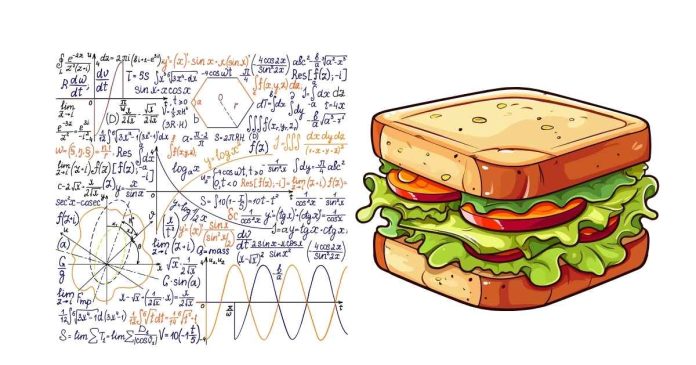Sandwich Theorem (Squeeze Theorem)
The Sandwich Theorem (also known as the Squeeze Theorem) is a fundamental result in calculus that allows us to find the limit of a function by “squeezing” it between two other functions whose limits are known and are equal at a particular point.
Statement:
Let f(x)f(x), g(x)g(x), and h(x)h(x) be functions defined on an interval around aa (except possibly at aa). If the following three conditions hold:
- g(x)≤f(x)≤h(x)g(x) \leq f(x) \leq h(x) for all xx in some interval around aa (except possibly at a),
- limx→ag(x)=L
- Then limx→af(x)=L
In simpler terms, if f(x)f(x) is squeezed between two functions g(x)g(x) and h(x)h(x) which both approach the same limit LL as x→ax \to a, then f(x)f(x) must also approach L.
Proof:
Step 1: Set Up the Squeeze Inequality
We are given that for all xx sufficiently close to aa, except possibly at aa,
g(x)≤f(x)≤h(x).g(x)
Also, we know that
limx→ag(x)=L
Step 2: Use the Definition of Limit
Since limx→ag(x)=L there exists a δ1>0\delta_1 > 0 such that for all xx in the interval (a−δ1,a+δ1) (a – + \delta_1),
Similarly, since limx→ah(x)=L
Step 3: Combine the Results
Let δ=min(δ1,δ2)
This implies:
L−ϵ<g(x)<L+ϵ and L−ϵ<h(x)<L+ϵ.L –
Step 4: Apply the Squeeze Inequality
Since g(x)≤f(x)≤h(x)g(x) we can conclude:
L−ϵ<f(x)<L+ϵ.L – \epsilon < f(x) < L + \epsilon.
Step 5: Conclusion
Thus, for all xx sufficiently close to aa, we have
∣f(x)−L∣<ϵ.|f(x) – L| < \epsilon.
By the definition of the limit, this implies that
limx→af(x)=L.\lim_{x \to a} f(x) = L.
This completes the proof of the Sandwich (Squeeze) Theorem.
Example:
Consider the following example:
Let f(x)=x2sin(1x)f(x) = x^2 .
- We know that −1≤sin(1x)≤1-1
- Thus, we have: −x2≤x2sin(1x)≤x2.-x^2
- Taking the limit of the bounds as x→0x \to 0: limx→0−x2=0andlimx→0x2=0
- By the Squeeze Theorem, we conclude that limx→0x2sin(1x)=0.


